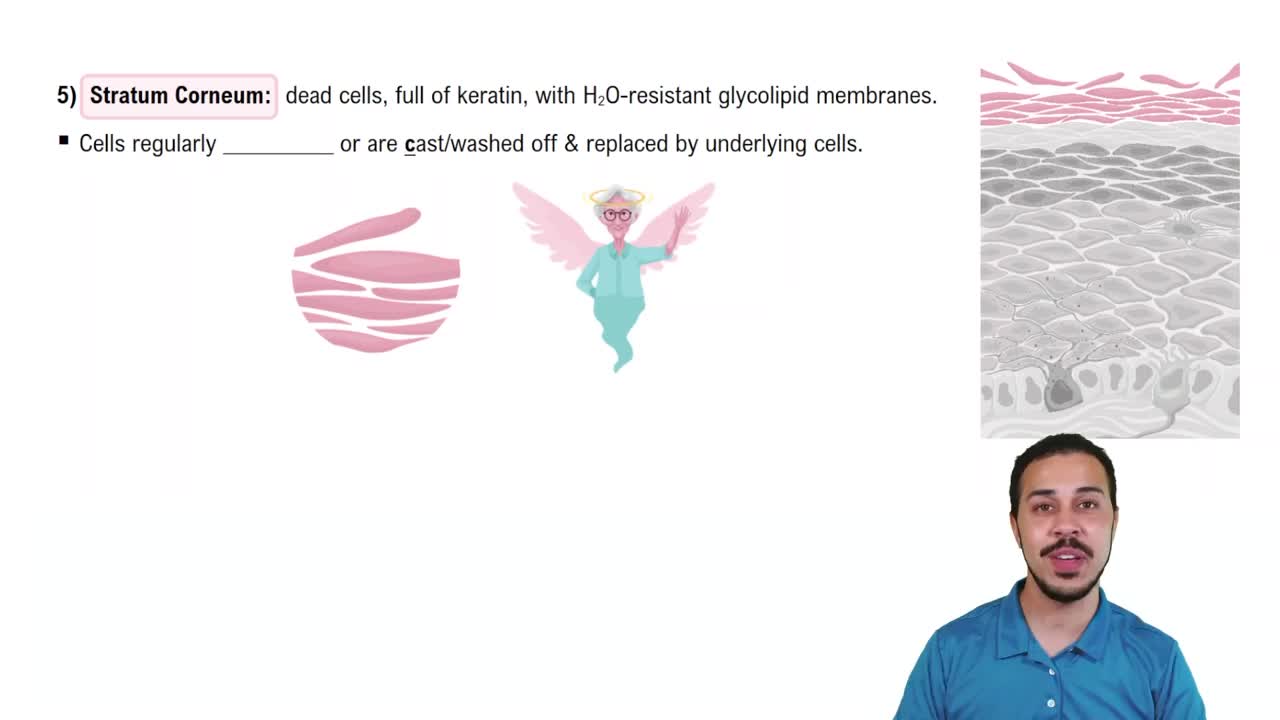Mark the following statements as true or false. If a statement is false, correct it to make a true statement.
Dendritic cells are phagocytes of the immune system that protect the skin and deeper tissues from invasion by pathogens.
 Verified step by step guidance
Verified step by step guidance Verified video answer for a similar problem:
Verified video answer for a similar problem:



 1:03m
1:03mMaster Introduction to Cells of the Epidermis with a bite sized video explanation from Bruce Bryan
Start learning